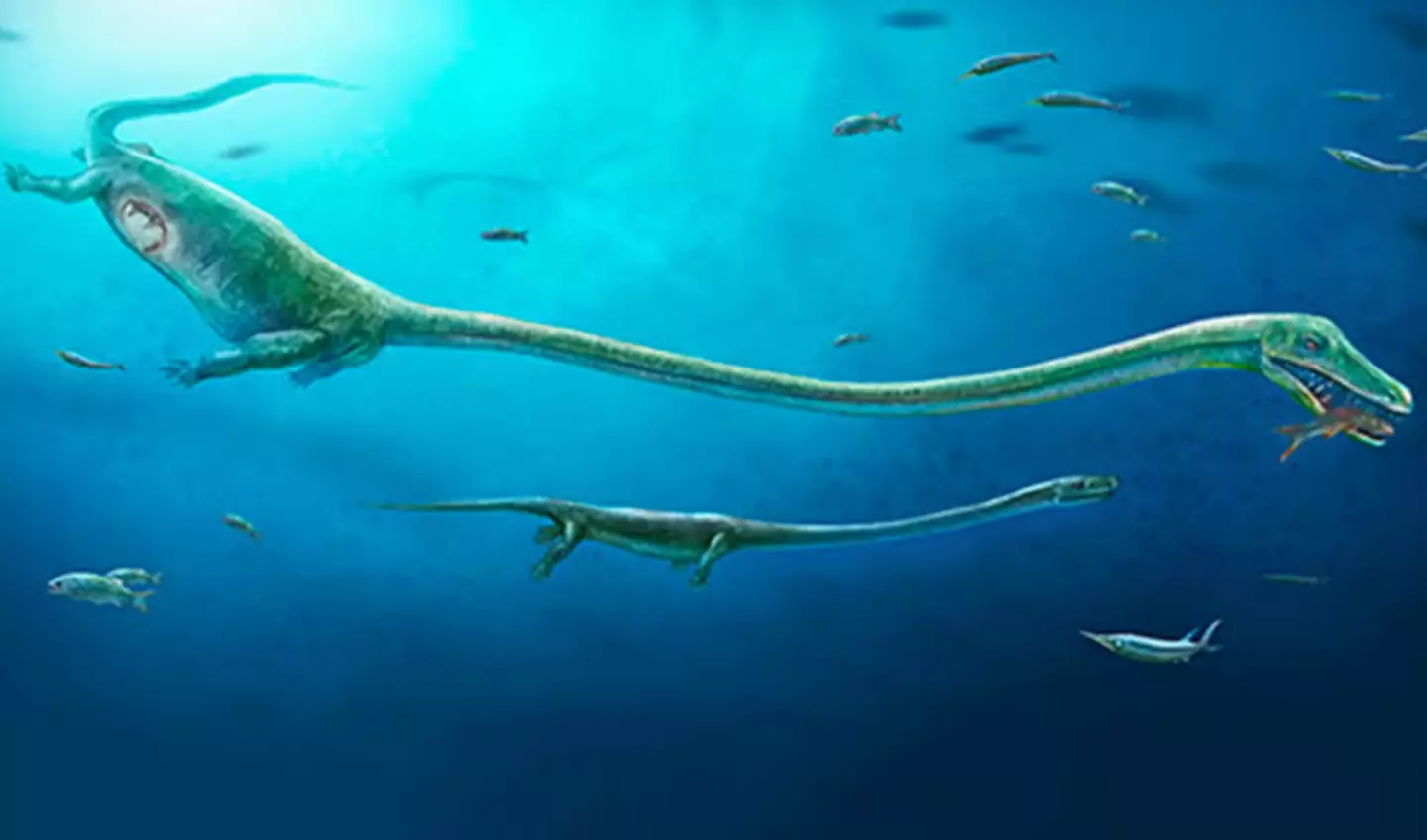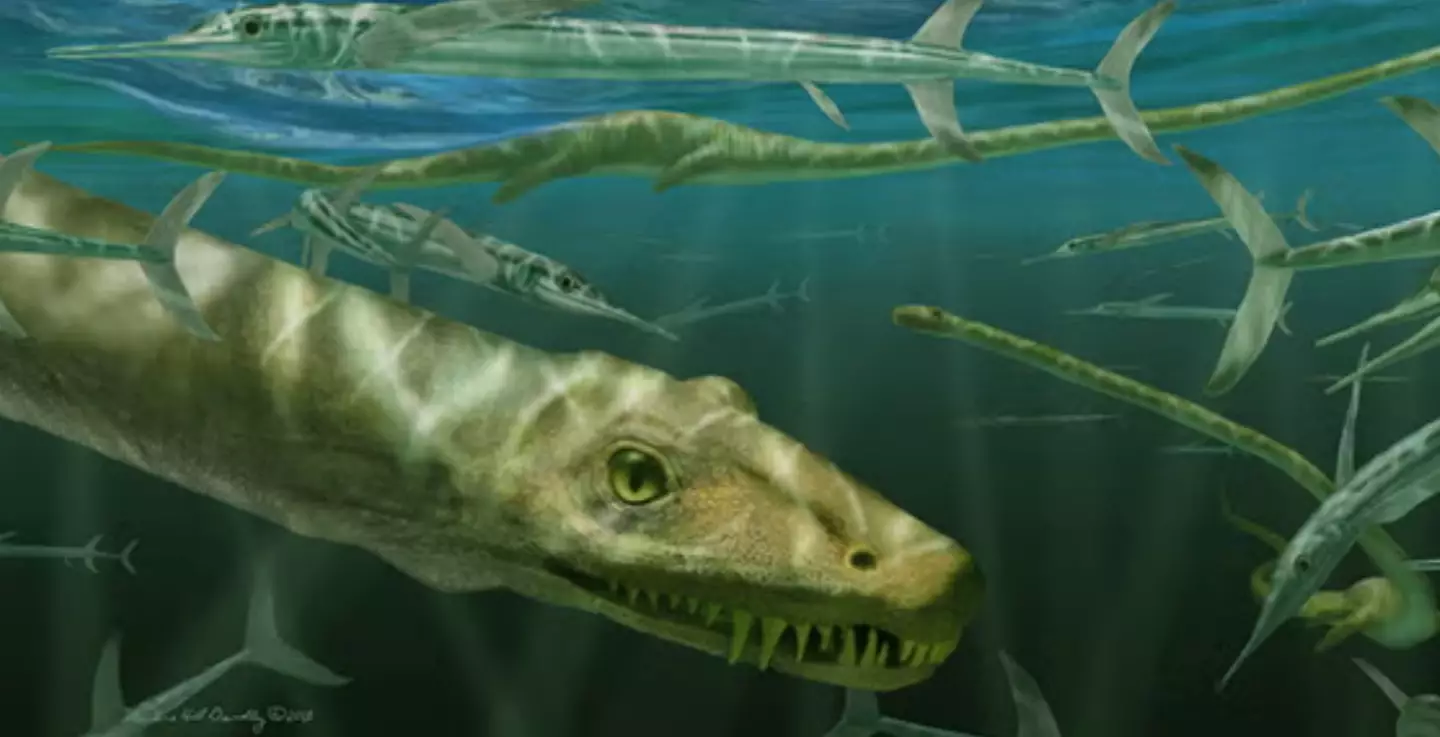
Scientists have revealed they've found remains similar to a 'Chinese dragon' that lived 240 million years ago.
Found in Guizhou province, Southern China, the creature boasts a long 32-vertebrae neck, which earned it the comparison to the ancient Chinese 'dragon'.
The creature was first identified back in 2003, but technology and research improvements since then have helped researchers be thorough with their findings.
Advert
Given the catchy name 'Dinocephalosaurus orientalis', the fossils were found to have had 'flippered limbs' and well-preserved fish in its stomach region, which would suggest the creature lived an aquatic life.
Keeper of Natural Sciences at National Museums Scotland, Nick Fraser, was involved in the research of the remains and described the creature as a 'very strange animal'.
He said: "This discovery allows us to see this remarkable long-necked animal in full for the very first time.
“It is yet one more example of the weird and wonderful world of the Triassic that continues to baffle palaeontologists.

“We are certain that it will capture imaginations across the globe due to its striking appearance, reminiscent of the long and snake-like mythical Chinese dragon," Fraser continued.
Advert
It's said that the remains of the Dinocephalosaurus orientalis is similar to that of the Tanystropheus hydroides - with both having very long necks.
However, the Tanystropheus was uncovered in Middle Triassic period of both Europe and China.
Researchers from Scotland, America and Germany studied the Dinocephalosaurus orientalis over the course of 10 years, and found that although the creatures were similar in size, the Dinocephalosaurus has many more vertebrae both in the neck and in the torso, giving it a longer body.
Speaking to BBC News, Fraser said: "This discovery just adds to the weirdness of the Triassic. And every time we look in these deposits, we find something new."

Professor Li Chun from the institute said: “This has been an international effort.
Advert
"Working together with colleagues from the United States of America, the United Kingdom and Europe, we used newly discovered specimens housed at the Chinese Academy of Sciences to build on our existing knowledge of this animal.
“Among all of the extraordinary finds we have made in the Triassic of Guizhou province, Dinocephalosaurus probably stands out as the most remarkable.”
The study which describes the findings of the creature has been published in the latest volume of the Academic journal Earth And Environmental Science: Transactions Of The Royal Society Of Edinburgh.
Topics: Animals, China, World News, Science